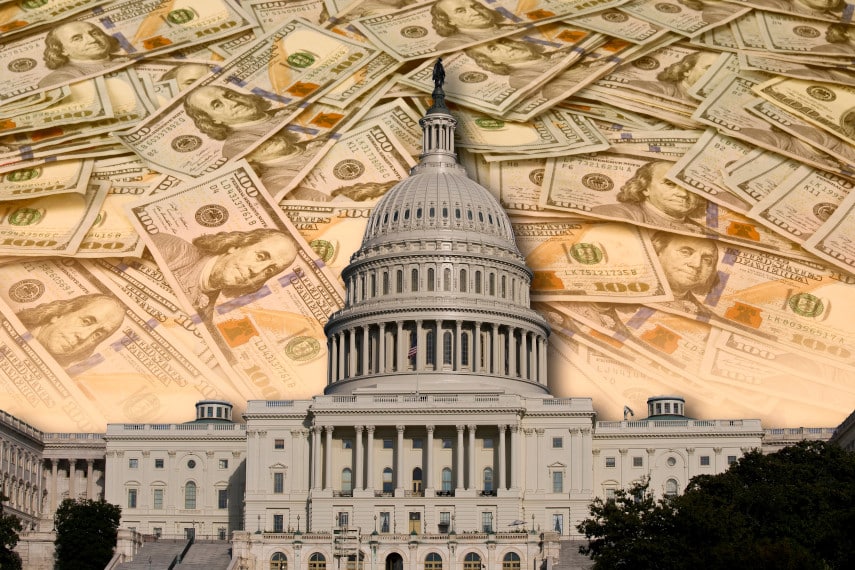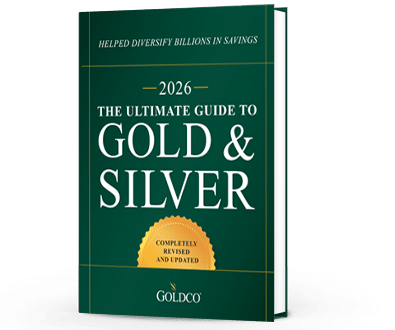Could Trump’s Tariffs Impact the Gold Price?
One of the key initiatives President Trump promised when he was elected was the implementation of tariffs on a wide variety of imports from numerous countries According to Trump, tariffs would, among...
Political

With inflation continuing to rise, you would hope that government leaders would do something to combat it. But from their proposed solutions, it becomes increasingly clear that they don’t understand inflation and what causes it. And because of that, don’t expect inflation to peter out anytime soon.
Janet Yellen, current Treasury Secretary and former Fed Chairman, is the latest Biden administration official to indicate her complete lack of understanding of what inflation is and how it occurs. In a recent interview from Rome, she expressed her support for the Biden administration’s infrastructure spending by saying that the infrastructure spending bill would be anti-inflationary.
How exactly does the federal government spending trillions of dollars that it doesn’t have become anti-inflationary? Let’s take a look at Yellen’s tortured logic to see what we can make of it.
Inflation: Convention vs. Reality
The mainstream economics profession today defines inflation as a general rise in the price level. Thus anything that results in a decline in that price level (which is calculated by the government) is defined as anti-inflationary.
So Yellen appears to try to argue that the government spending money in the infrastructure bill will lead to lower healthcare costs or childcare costs for consumers. Presumably this is because the federal government will try to spend more money on healthcare and childcare in order to subsidize consumers.
This doesn’t mean that those services cost less, it just means that the real spending on those services is obscured. But because consumers might spend less upfront, it could be reflected in a drop in the official inflation rate, which doesn’t take into account the government’s spending.
That’s at least the initial effect. But as with any subsidized market, prices elsewhere could rise. It’s similar to how the availability of cheap government-backed student loans has led to a massive increase in college tuition costs. Or how in areas of rent control, the rents of non-rent-controlled apartments end up being far higher than normal market rates.
And of course all of this is ignoring the fact that inflation was traditionally defined as an increase in the money supply. The effect of this increase in the money supply is a rise in prices.
That’s why we’ve seen such a massive rise in prices recently. The federal government’s massive fiscal stimulus and other spending over the past two years has been funded through new debt issuance. Much of that debt ended up on the balance sheet of the Federal Reserve, which purchased over $3 trillion of Treasury bonds between March 2020 and the present.
Overall, the Fed increased the size of its balance sheet by over $4.5 trillion. All of the money used to purchase those assets on its balance sheet was created out of thin air. And now that that money is making its way into the financial system, we’re seeing the result of it in the form of higher prices.
Further government spending, whether in the form of infrastructure spending, climate change spending, etc., will have to be paid for with more debt issuance, and if the Fed mops up that debt too it will be inflationary, not anti-inflationary. Yellen is trying to sell more spending with a flat-out misunderstanding of inflation and a claim that is likely going to be the exact opposite of the truth.
Why the Delay?
Normally you might expect prices to rise relatively quickly after a monetary injection, particularly one as large as the Fed’s. But there were numerous other factors at play. Since much of the money created was done in order to put money in the pockets of US taxpayers as a result of fiscal stimulus, the effects of the newly created money hit individuals’ wallets before the banking system.
And with lockdowns depressing consumers’ ability to spend, it’s no surprise that a lot of money sat on the sidelines. That has all changed now that the economy is largely opened back up. And now we’re seeing the effects of the $4.5 trillion that the Fed created.
Annual inflation is well over 5% and rising. Panicking consumers are buying anything they can get their hands on, helping lead to shortages at stores and empty shelves. And the federal government, Janet Yellen included, is oblivious to how it has caused inflation and is proposing even more inflationary spending.
We likely haven’t seen the end of rising prices as a result of the Fed’s actions. It could be many months before inflation tapers, or even years if we see further asset purchases from the Fed in the future. And that could harm not only consumers but also investors.
Inflation and Your Savings
Investors haven’t seen inflation rates this high in well over a decade. And the last time we saw sustained high inflation was during the 1970s and early 1980s, a time of economic turmoil. Most investors today weren’t alive back then, and those who were were at the beginning of their investing. Thus the lessons learned back then have largely been forgotten.
Investors today are going to have to develop new strategies to overcome chronic high inflation. One that is becoming increasingly popular is investing in precious metals like gold and silver.
Gold and silver outperformed many assets during the 1970s, with average annualized gains of over 30% over the course of the decade. That far surpassed the 5% total gain of stock markets. And in the aftermath of the 2008 financial crisis gold nearly tripled, while silver more than quintupled.
That kind of performance had many investors vowing that the next time economic uncertainty reared its head, they would protect their savings with gold and silver. Many have done so already, but many more are sitting on the sidelines, perhaps waiting for the definitive signs of a downturn before pulling the trigger. Are you one of them?
If you’re interested in minimizing your losses, now may be the time to start thinking about protecting your savings and investments with precious metals. With a precious metals IRA, you can protect the assets in your retirement accounts with an investment in physical gold or silver bars or coins. And you can fund your gold IRA or silver IRA with a tax-free rollover or transfer from your existing 401(k), 403(b), TSP, IRA, or similar accounts.
Many people are also looking to buy gold and silver to protect their other assets. With direct cash purchases of gold and silver you can exchange your cash, which loses value to inflation each year, with gold and silver, which have strong long-term growth potential and traditionally perform well during times of rising inflation.
Whichever form of gold or silver you’re interested in, the precious metals experts at Goldco can help you through the precious metals purchase process and answer any questions you may have. With a reputation for high quality customer service, Goldco’s specialists leave no stone unturned in making sure your purchase of gold and silver goes smoothly.
Don’t let your retirement savings spend one more day at risk of being devalued by inflation. Call the experts at Goldco today and get on the road to protecting your retirement dreams with gold and silver.

